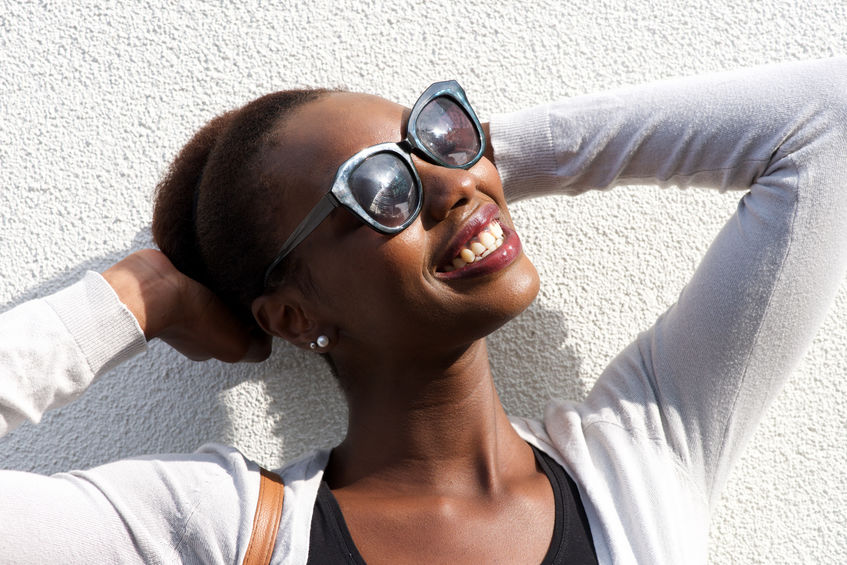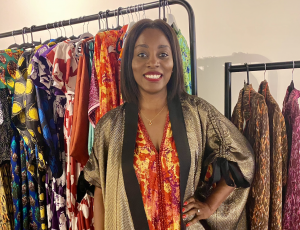This skincare expert answers the top 10 questions you need to know about protecting your skin from the sun this summer.

By now, you’ve probably come to terms with the fact that you probably won’t be going on an exotic holiday to some faraway destination this year, but we still have everything crossed for a lovely, hot summer. We are familiar with the importance of protecting our skin from the sun, yes, you do need to wear good SPF sunscreen even on cloudy days! But, if you’re like us, you probably still have loads of niggly little questions about protecting our melanin glow from the sun. Are we actually applying sunscreen properly? What do the actual numbers on SPF really mean?
Skincare expert Dr Jinah Yoo, a consultant dermatologist at skincare clinic sk:n, took some time to answer some of the most common questions we have about protecting our skin from the sun.
Q: A lot of people wear makeup that contains SPF, is this enough protection for us to not need to reapply throughout the day?
A: Make up with SPF is not a substitute for sunscreen. Make-up or moisturisers with SPF are more likely to be easily removed by water or rubbing and we tend to apply a lot more thinly than sunscreen. Furthermore, SPF is an indicator for UVB protection but does not give protection against UVA.
Q: What are the most common mistakes you see people making when using and applying sunscreen?
A: Studies have shown that most people apply less than half of the amount required to provide enough sun protection. If you are using sun lotions, you should apply at least six teaspoons to cover the body of an average adult and half a teaspoon to face and neck.
Q: What are the earliest signs of skin damage which we might not pick up on?
A: Skin can appear dry, flaky and itchy with sun-damage which can be confused with many other conditions. Also, it can appear dull with uneven pigmentation, this is a subtle and early sign of skin damage from the sun.
Q: What exactly happens to the skin when it’s over-exposed to the sun?
A: The dark pigment produced in our skin, called melanin, increases in response to sun exposure. This is in an attempt to absorb UV and protect our skin. Increased production of melanin subsequently can mean skin becomes tanned. However, in lighter skin types, there is a smaller amount of melanin, meaning that the skin tends to react to UV rather than protecting against it. This means that lighter skin type tends to burn rather than tan.
Q: What is the difference between UVA and UVB rays and how should we protect our skin from both?
A: UVB can cause sunburn and skin cancer whereas UVA is associated with skin ageing and skin cancer. UVA has longer wavelengths than UVB therefore UVA can penetrate through window glasses and deeper to the skin. To have adequate sun protection, my advice is to apply sunscreen with SPF 30 or above and UVA star rating of 4 or 5 stars after moisturiser every morning and reapply every two hours when you are going outdoors.
Q: What should we be looking for when buying SPF? They don’t come cheap and can very quickly run out if we are apply them all over our body several times a day when on holiday. Are we ok to buy cheaper brands, or should we be investing in the most expensive ones?
A: Choose the sunscreen which suits your skin type. Expensive sunscreen does not mean that it will suit everyone. Nowadays, there are many different types of formulation targeting different skin types. If you have acne-prone oily skin, then go for oil-free gel. When you are buying a sunscreen, it is most important to look at the SPF and UVA star rating to make sure that it has SPF 30 or above and UVA star rating of 4 or 5 stars.
Q: What exactly does the number on SPF products mean?
A: SPF stands for sun protection factor. It refers to the amount of UVB protection the sunscreen offers compared to unprotected skin. For example, SPF15 allows 7% of UVB to reach your skin whereas only 2% reaches your skin with SPF50.
Q: Why do we find that spots appear on the face, chest and shoulders when we apply SPF? Does it clog up our pores?
A: Comedogenic materials in sunscreen can clog up the pores and cause spots. Another possibility is that chemical sunscreens, with ingredients like benzophenones, can cause irritant reaction causing red bumps.
Q: Are there any common myths or misconceptions about SPF and protecting your skin that you find parents have come to you with?
A: You may have seen some sunscreen advertised as ‘long-lasting’ and requiring only once-a-day application. However, majority of us do not apply adequate amount of sunscreen and we can miss some areas when we apply the sunscreen. Also, it can be accidentally removed by rubbing or sweating throughout the day. Therefore, it is recommended to reapply sunscreen every 2 hours to exposure.
Q: What are the top skincare tips for sunburn?
A: To reduce the pain and soothe the skin, you can cool down with frequent cool showers or use moisturisers containing aloe vera or soy. If you develop blisters, you need to leave them to heal by themselves, this is so that the blister can be used as a natural dressing and prevent infection.












